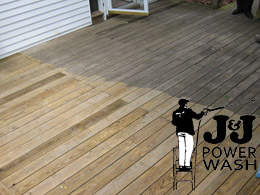Your Place: A Homeowner’s Advice on Caring for a Deck
August 19, 2011|By Alan J. Heavens, Inquirer Real Estate Writer
Reader Alden Smith of Wayne offers some words of wisdom on deck care and maintenance:
“My cedar-plank deck is 19 years old and is in very good condition. Each year, I apply Olympic semi-transparent, oil-based product. I use a sponge-mop applicator with a roller pan to apply. This is an easy and quick method.
“I have had to replace a few boards … from time to time. … I only replace the bad section by using a sabre saw to cut it out. Then I attach a new cleat to the deck frame and drop it in place.
“I use a Cabot stain to color the new section to duplicate the existing color and then apply the Olympic.
“The deck is on a sloping hill with a lot of ventilation. This is why it has lasted so well.”
His daughter had a deck built by the same contractor using cedar. Since her deck is only a few feet off the ground, it has rotted badly. It has been coated every few years.
Now her 17-year-old deck will be replanked using Trex, the composite wood product.
“I would advise a deck built close to ground level be constructed of Trex or similar material,” Smith said. “More expensive, but it will last a long time.”
Painting weathered wood. Our expert, Debbie Zimmer of the Paint Quality Institute, is back this week with tips on painting weathered wood. When painting a home with a wood exterior, it’s not unusual to find areas that are weathered.
Sometimes, this is because it has been years since the last paint job. But even new construction – a recent addition – can be weathered after only a few weeks if unpainted wood is left exposed.
“If the wood exterior you’re about to paint meets one of these descriptions, you’ll need to do some extra surface preparation,” Zimmer said. “That’s the only way to end up with a quality, long-lasting paint job.”
Assuming the wood was painted previously, start surface preparation by scraping away loose or peeling paint.
Dry rot (dry, crumbly sections of wood) and wet rot (soggy, soft spots) are both caused by microorganisms that thrive in damp conditions.
Rot can destroy the wood so completely that a finger can be pushed right through it. To test for rot, poke suspicious-looking boards with an awl; if it goes in easily, the wood has rotted.
If you are in the Greater Philadelphia area and are in need of pressure washing, power washing, window cleaning, graffiti removal or vehicle cleaning services, contact our Philadelphia Pressure Washing company at 215-703-8306.

